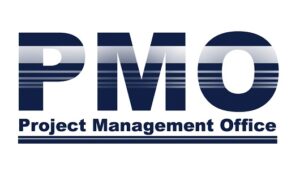The article “Agile Methodology Explained: Principles Practices and Benefits” provides a clear overview of Agile methodology, a popular approach to project management. It covers the core principles outlined in the Agile Manifesto, key practices such as iterative development and collaboration, and highlights the benefits, including flexibility, improved team productivity, and faster delivery of value to customers. This guide is ideal for project managers and teams looking to understand and implement Agile for efficient and adaptive project execution.
Introduction to Agile Methodology
In a world where change is the only constant, Agile methodology emerges as a game-changer in project management. Imagine a flexible, responsive approach that adapts to your team’s needs and the ever-evolving market demands. That’s Agile for you!
At its core, Agile focuses on delivering value through iterative work cycles, enhancing collaboration, and embracing change. This methodology is not just a trend; it’s an essential tool for modern project management, enabling teams to thrive in dynamic environments and consistently meet customer expectations.
Core Principles of Agile
Individuals and Interactions Over Processes and Tools
Agile values the human aspect of project management. Imagine a team huddled over coffee, brainstorming ideas rather than being buried in complex processes. The focus is on fostering communication and collaboration to drive innovation and creativity.
Working Software Over Comprehensive Documentation
In Agile, the priority is delivering functional software that meets user needs. Picture a developer showcasing a new feature to a client, rather than drowning in endless paperwork. The goal is to create real value rather than getting bogged down by exhaustive documentation.
Customer Collaboration Over Contract Negotiation
Agile encourages building strong partnerships with customers. Think of it as a friendly chat with a customer to refine a product, instead of rigid contract discussions. This principle ensures that the end product truly aligns with the customer’s vision.
Responding to Change Over Following a Plan
In a fast-paced world, adaptability is key. Imagine a team quickly pivoting their strategy in response to market changes. Agile embraces flexibility, allowing teams to adjust and improve continuously rather than sticking to a rigid plan.
Key Agile Practices
Iterative Development
At the heart of Agile is iterative development, where projects are broken into small, manageable chunks. Imagine a sculptor chiseling away at a block of marble, refining it piece by piece. This approach allows teams to develop features incrementally, ensuring that each iteration adds value and can be adjusted as needed.
Collaboration and Communication
Agile thrives on strong collaboration and open communication. Picture a diverse team gathered in a daily stand-up meeting, sharing updates and tackling challenges together. This practice fosters a sense of unity and helps to quickly resolve issues, ensuring everyone is aligned and working towards a common goal.
Continuous Feedback and Improvement
In an Agile environment, feedback is a valuable tool for growth. Imagine a chef constantly tasting and adjusting a dish to perfection. Teams regularly seek input from stakeholders and customers, allowing them to refine their work continuously. This cycle of feedback ensures that the final product meets expectations and delivers real value.
Benefits of Agile Methodology
- Flexibility and Adaptability
Agile methodology shines in its ability to adapt to change. In fact, a study by PMI found that 71% of organizations using Agile reported higher adaptability to changes. This flexibility is crucial in today’s fast-paced world, allowing teams to pivot quickly in response to evolving customer needs or market conditions.
- Improved Team Productivity
Agile practices foster an environment where teams can thrive. By emphasizing collaboration and communication, Agile enhances productivity and efficiency. According to a VersionOne survey, 87% of Agile users reported improved team productivity. This results in more engaged teams that can deliver higher-quality outcomes.
- Faster Delivery of Customer Value
One of the key advantages of Agile is its focus on delivering value quickly and continuously. Agile projects are often completed 37% faster than traditional methods, as reported by the same VersionOne survey. This accelerated delivery ensures that customers receive the benefits of new features or products sooner, enhancing satisfaction and competitive advantage.
Agile vs. Traditional Methodologies
When it comes to project management, Agile and Waterfall are two prominent methodologies, each with its unique approach to execution. Let’s take a closer look at how they compare:
| Aspect | Agile | Waterfall |
|---|---|---|
| Development | Iterative | Sequential |
| Flexibility | High | Low |
| Customer Involvement | Continuous | Minimal |
Agile’s flexibility is its crowning glory, allowing teams to adapt to changes quickly. A report by the Standish Group highlights that Agile projects are 28% more successful than their Waterfall counterparts. This iterative approach ensures continuous improvement and customer feedback, but it might lead to scope creep if not managed well.
Meanwhile, Waterfall is celebrated for its structured framework. It’s predictable, with clear stages and deliverables, which can be advantageous for projects with fixed requirements. However, its rigidity can be a drawback in dynamic environments, as changes are difficult to implement once the project is underway.
Both methodologies have their strengths and weaknesses, and the choice often depends on the specific needs and context of a project.
Real-World Applications of Agile
Agile in Software Development
Agile has revolutionized software development by promoting iterative progress and continuous feedback. For instance, a team at a tech startup may release small, incremental updates to their app every two weeks. This allows them to incorporate user feedback swiftly and adapt to any emerging market trends. Developers often share anecdotes about how Agile has enabled them to pivot quickly, turning potential pitfalls into opportunities for growth.
Agile in Marketing
In the marketing realm, Agile helps teams respond to ever-changing consumer behaviors and trends. A marketing team might use Agile to test and refine campaigns in real-time. By running short, focused sprints, they can adjust strategies based on immediate results, much like a digital agency that adjusts ad copy and imagery after analyzing performance metrics. This dynamic approach keeps campaigns fresh and relevant.
Agile in Education
Educators are also embracing Agile methodologies to enhance learning experiences. For example, a teacher might apply Agile principles by breaking the curriculum into smaller, manageable modules. This allows for regular check-ins with students to assess understanding and adjust teaching methods accordingly. Teachers often share stories of how this approach has fostered a more engaging and responsive classroom environment.
Common Questions About Agile
- How does Agile handle project changes? Agile thrives on flexibility. It embraces changes even late in development by integrating them through iterative cycles. This adaptability allows teams to refine and adjust their projects based on feedback and evolving requirements, ensuring the final product meets the current needs.
- What are the roles in an Agile team? An Agile team typically includes several key roles:
- Product Owner: Responsible for defining the product vision and prioritizing the backlog.
- Scrum Master: Facilitates the Agile process, removing impediments and ensuring the team adheres to Agile principles.
- Development Team: A cross-functional group that collaborates to deliver the product incrementally.
- How does Agile ensure quality? Quality is maintained through continuous testing and integration. Agile encourages frequent testing and customer feedback after each iteration. This ongoing process helps identify and rectify defects early, ensuring the product maintains high standards throughout development.
Summary of Key Takeaways
As we explored the Agile methodology, several key principles and practices stood out:
- Agile Principles: Focus on individuals and interactions, delivering working software, collaborating with customers, and embracing change.
- Agile Practices: Iterative development, strong emphasis on collaboration, and continuous feedback to drive improvement.
The benefits of Agile are notable:
- Flexibility: Agile’s adaptability makes it ideal for managing change effectively.
- Team Productivity: Enhanced communication and collaboration lead to improved efficiency.
- Customer Value: Faster delivery ensures that customer needs are met promptly.
Agile’s applications extend beyond software development, finding relevance in marketing, education, and more. Reflect on how these insights can be applied to improve your own project management strategies.
Next Steps for Implementing Agile
Identify a Pilot Project
To begin your Agile journey, start by selecting a pilot project that is manageable in scope. This project should ideally have a flexible timeline and a team open to experimentation. Using a smaller project allows you to test Agile principles without overwhelming your resources.
Train Your Team
Once your pilot project is set, the next step is to train your team. Ensure that everyone understands Agile principles and practices. Consider workshops or online courses to build foundational knowledge. This step is crucial for fostering a shared understanding and commitment to the Agile approach.
Evaluate and Adapt the Process
As your team begins to implement Agile, regularly evaluate and adapt the process. Gather feedback from team members through retrospectives and adjust your approach as needed. This continuous improvement cycle will help refine your Agile practices and address any challenges that arise.
Ready to take the plunge into Agile? Start by identifying that pilot project and watch as your team transforms the way they work, delivering value more efficiently and collaboratively.
Must-Reads to Deepen Your Knowledge
BRECHNER, ERIC; Agile Project Management with Kanban (Developer Best Practices) 1st Edition, Kindle Edition. 2015.
THOMPSON, ERIC; Lean Project Management: This Book Includes: All You Need to know about Six Sigma, Scrum, Agile Project Management, Kanban and Kaizen to Become a Master of The PMP World Kindle Edition. 2020.
SZABO K.; Project Management Masterclass: A Practical Guide for Managing Waterfall, Agile, and Hybrid projects. 2024.





